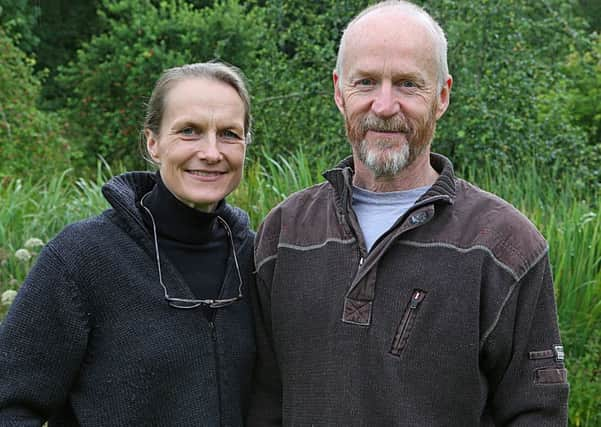Fighting back after'˜ticking time bomb'


avoid the debilitating illness.
Callum Murray (59) was forced to give up the kitchen business he ran with his wife Polly after falling ill following a walking holiday in France.
He was one of the unlucky six per cent of people who contract Lyme disease after being bitten by a tick – and now, four years on, he’s still not fully recovered.
Advertisement
Hide AdAdvertisement
Hide AdNow Callum’s wife Polly, of Auchtermuchty’s Macduff Trust, is using the couple’s experience to give hope to others.
She’s giving a talk at the Trust’s AGM on August 30 called Lyme Disease, the Ticking Time Bomb, in which she’ll share advice on how to recognise the symptoms .
She’ll be referring to the website www.lymediseaseaction.org.uk, recognised by the government as a reliable source of information.
Said Polly: “Over the course of my research I have been astounded at how little understood this disease is – particularly as it is a growing threat to anyone who enjoys the outdoors – even parks and gardens.
Advertisement
Hide AdAdvertisement
Hide Ad“I am conscious not to scaremonger, but at the same time, people need to know the symptoms so they can get effective treatment.
“Had I known the symptoms, I should have sought earlier treatment for my husband who now has a chronic version of the disease, as do hundreds of other people in Scotland and the number of cases is rising rapidly.
“It’s been in the press a lot of late, but rarely are clear facts presented.”
Coincidentally, Polly heard about Lyme disease after her namesake, Polly Murray of Lyme, Connecticut, campaigned to have it recognised as a disease back in the 1970s.
Advertisement
Hide AdAdvertisement
Hide AdTicks are tiny spider-like creatures found in woodland and heath areas.
They feed on the blood of birds and mammals, including humans –but not all carry the bacteria responsible for Lyme disease.
Lyme disease can often be treated effectively if it’s detected early on.
But if it’s not treated – or treatment is delayed – there’s a risk of developing severe and long-lasting symptoms like joint pain and muscle paralysis
Advertisement
Hide AdAdvertisement
Hide AdLike most sufferers, Callum started experiencing flu-like symptoms about three weeks after he returned from holiday and was diagnosed as a ‘classic case’.
But it wasn’t until about a year later, when a bee sting resulted in anaphylactic shock, that the disease set in with a vengeance.
He’s now about 80 per cent recovered, but has to pace himself and, unable to carry out the physical work he once did, has turned his talents to inventing.